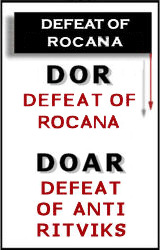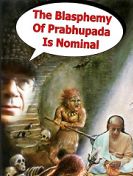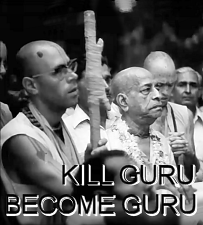Ant, the small ant, it is also working. The same thing is going on in the ant society. They are also struggling for existence, eating, sleeping, mating, and defending. And we are also doing that.
Srimad-Bhagavatam 1.3.16 and Initiation
Los Angeles, September 21, 1972
httpv://youtu.be/Z-gIx7LXcQM
video: ANTS – Nature’s Secret Power (Full)
How ants find their way
Current Biology, Volume 22, Issue 16, R615-R618, 21 August 2012
(1) The first technique an ant uses to find its way is to count its steps. “Essentially, when the ant leaves its nest to go foraging, it counts the steps and keeps a record of how many steps it is away from home at any given time, like a pedometer,” Gross writes (see 6/29/2006). “In addition, it also records changes in direction.” There’s an app for that – right in the ant’s brain: the “path integrator”. It’s an “unflappable” tool that works even when mischievous experimenters try to get the ant off track.
(2) Another app an ant uses is the sun compass. Even at night, some ants can detect polarized skylight to orient themselves.
(3) A third app an ant uses is “the vibe” – vibration signals the ant can generate as a call for help, or vibrations from the nest the ant can memorize to find the way home.
(4) A fourth app in the ant’s orientation toolkit is carbon dioxide sensing, used to locate its nest. Since all nests create CO2 plumes, the ant has smarts to trust the path integrator app in conjunction with the CO2 sensor. “The research suggests that ants can use any of a wide range of sensory signatures associated with a place of interest to complement their path integration information,” Gross says.
(5) A fifth app is the magnetic compass– an ability to orient to the earth’s magnetic field. Monarch butterflies and some birds also have this ability. In ants and in birds, proteins called cryptochromes are thought to be the seat of magnetosensation, but the theory needs more study.
(6) A sixth app is the sense of smell, obviously. For this, ants are well equipped. We shouldn’t take this sense for granted; “tracking an odour plume is a complex computational task, as the distribution of the relevant substance in the fluid may be irregular and will depend on flow dynamics,” Gross explains. Scientists are only beginning to understand this highly complex sense in insects (for mind-boggling introduction, see the 6/27/2005 entry). If ants are equipped like fruit flies are, they “can perceive substance gradients in an odour plume ‘in stereo’, enabling them to navigate towards a source of food odours, for example.” Your picnic lunch isn’t safe.
(7) A seventh app is vision. Ants do look around with their compound eyes; they are known to identify landmarks to hone in on sites the path integration app has brought them near. Gross quotes entomologist Jochen Zeil (Australian National University, Canberra) who states we are only beginning to understand how ants use vision in orienteering: “Quite generally, we are just starting to acquire, develop and apply tools that allow us to reconstruct the navigational information available to animals under natural conditions,” he said. “We know that both localization of goals and direction of heading along routes can be achieved without segmentation of the visual scene into discrete objects, which is considered to be computationally demanding — but who knows?” as if to hint they might perform that computation in their little computers. Gross adds to the wonder by stating, “The biggest challenge is to find out how the insects store complex geographical information in their very small brains.” Researchers have witnessed inklings of this: “certain parts of the brain of insects reconfigure themselves when exposed to information related to navigation,” but mapping the external geographical information to the neuronal response scientifically is a long way off.
(8) Gross didn’t mention the chemical cues ants share with fellow hikers on the trail when they touch their antennae together. To this we can consider the roles of scout ants that sally forth alone in complex paths they must remember all the way home, so that their brethren can find the best path to the food source. In the 11/15/2000 entry, we described how ants quickly solve the complex “traveling salesman” or “Chinese postman” algorithm, a challenge even for supercomputers (10/26/2010).







Speak Your Mind